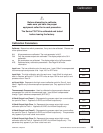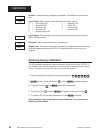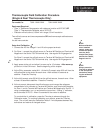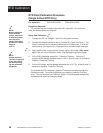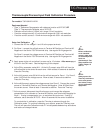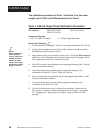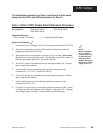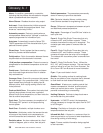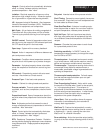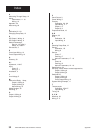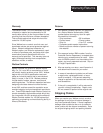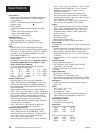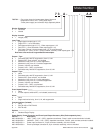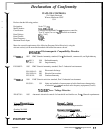
Appendix
31
WATLOW Series 733/734 Service Manual
Glossary, I - Z
Integral: Control action that automatically eliminates
offset, or “droop,” between set point and actual
process temperature. Also "reset."
Isolation: Electrical separation of sensor or other
device from high voltage circuitry. Allows for applica-
tion of grounded or ungrounded sensing element.
JIS Japanese Industrial Standards. Also Japanese
Industrial Standards Committee (JISC). Establishes
standards on equipment and components.
Melt Cycle: A fryer feature for melting congealed oil.
The control will duty cycle power until the oil melts.
The melt cycle prevents burning the oil during start-
up.
ON/OFF control: Control of temperature about a set
point by turning the output full ON below set point and
full OFF above set point in the heat mode.
Open loop: System with no sensory feedback.
Output: Action in response to difference between set
point and process variable.
Overshoot: Condition where temperature exceeds
set point due to initial power up or process changes.
Parameter: A physical property whose value deter-
mines the response of an electronic control to given
inputs.
PID control: Proportioning control with auto-reset
and rate. Also known as 3 mode control.
Pressure Fryer: Fries food under pressure.
Proofer: Cabinet for raising breads and pastries.
Process variable: Thermal system element to be
regulated, such as time, temperature, relative humid-
ity, etc.
Proportional band: Span of temperature about the
set point where time proportional control action takes
place.
Rate: Anticipatory action that senses the rate of
change of temperature and compensates to minimize
overshoot. Also "derivative."
Reset: Control action that automatically eliminates
offset, or "droop," between set point and actual
process temperature. Also "integral."
RTD: Resistance Temperature Detector. Resistive
sensing device displaying resistance versus tempera-
ture characteristics. Displays positive temperature
coefficient.
Set point: Intended value of the process variable.
Shelf Timing: Convection ovens typically have more
than one shelf. Each shelf can have a separate timer
for food added at different times.
Slow Start/Fast Start: A feature in cooking equip-
ment that provides an option for a one hour ramp-to-
set point temperature; reduces power demands.
Split Vat Fryer: Split vat fryers have two side-by
side fryer vats (same piece of equipment) that can
run at different times and temperature for different
recipes.
Steamer: Chamber that uses steam to cook foods
for a prescribed period of time.
Switching sensitivity: In ON/OFF control, the
temperature change necessary to change the output
from full ON to full OFF.
Thermal system: A regulated environment consist-
ing of a heat source, heat transfer medium, sensing
device and a process variable control instrument.
Thermocouple: Temperature sensing device that is
constructed of two dissimilar metals wherein a
measurable, predictable voltage is generated corre-
sponding to temperature.
Thermocouple break protection: Fail-safe opera-
tion that assures output shutdown upon an open
thermocouple condition.
Time Proportioning Control: Action which varies
the amount of ON time when "close" to the set point,
i.e., in the proportional band. This variance is
proportional to the difference between the set point
and the actual process temperature. In other words,
the amount of time the output relay is energized
depends on the system temperature.
Warm Start: Start-up condition where all program
information is remembered by the instrument's
memory back-up protection.
WatCurve™: Feature that automatically re-calcu-
lates and adjusts a menu cooking time as a result of
a disturbance — usually, opening the oven door.
WatCurve™ is a Watlow innovation.
Zero switching: Action that provides output switch-
ing only at the zero voltage crossing points of the AC
line.



